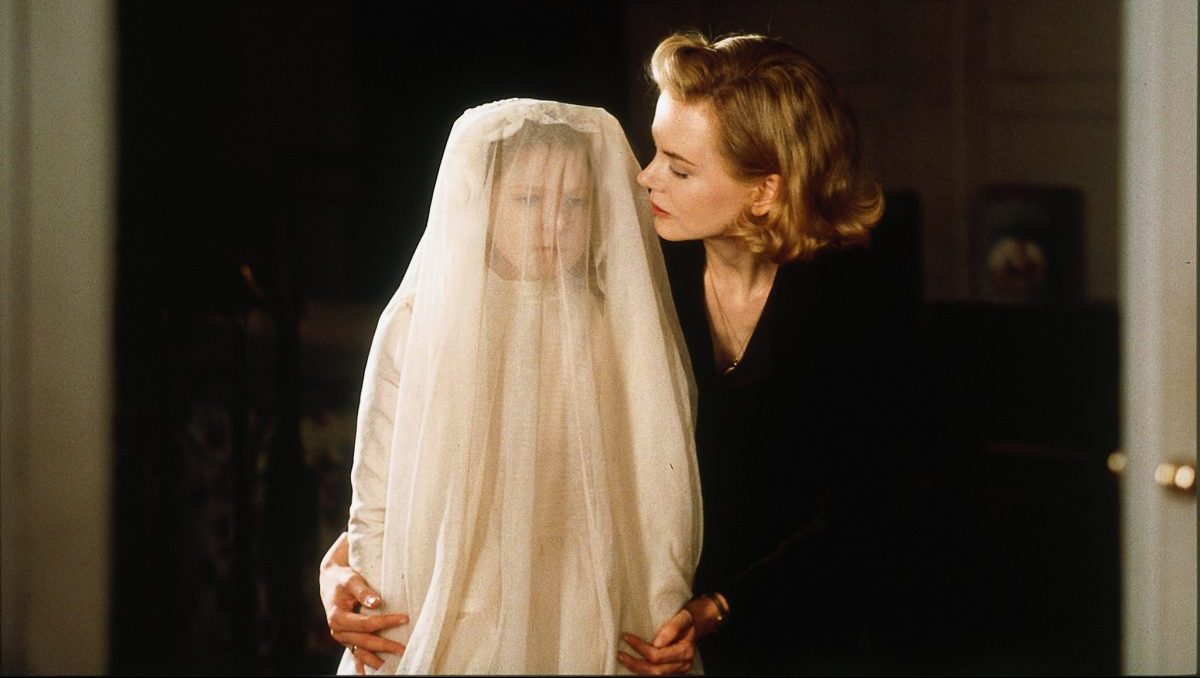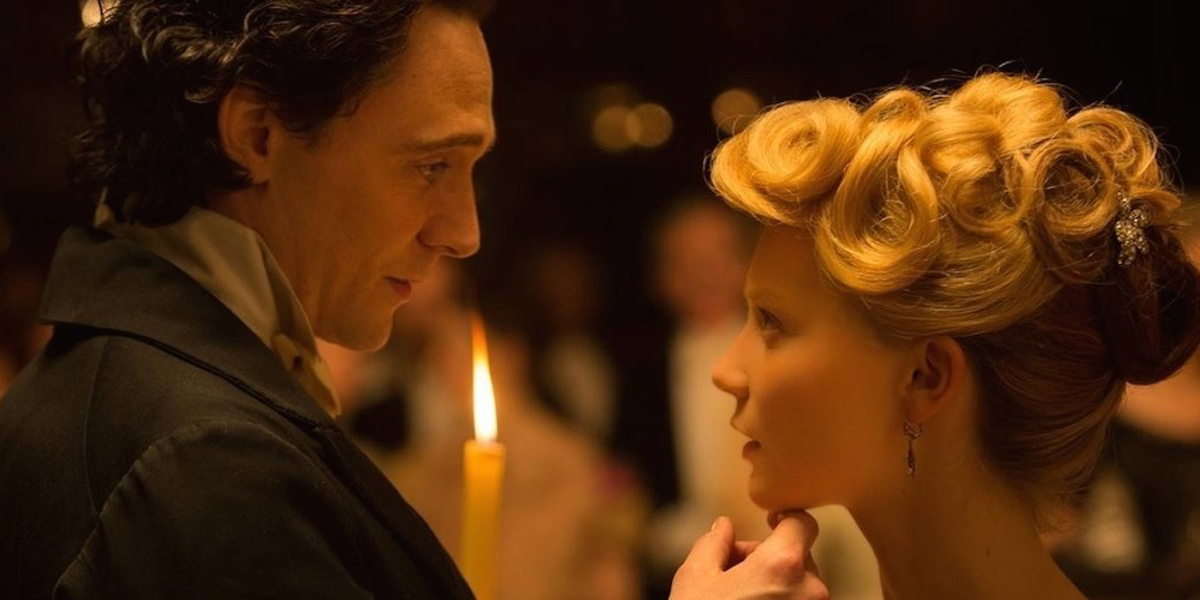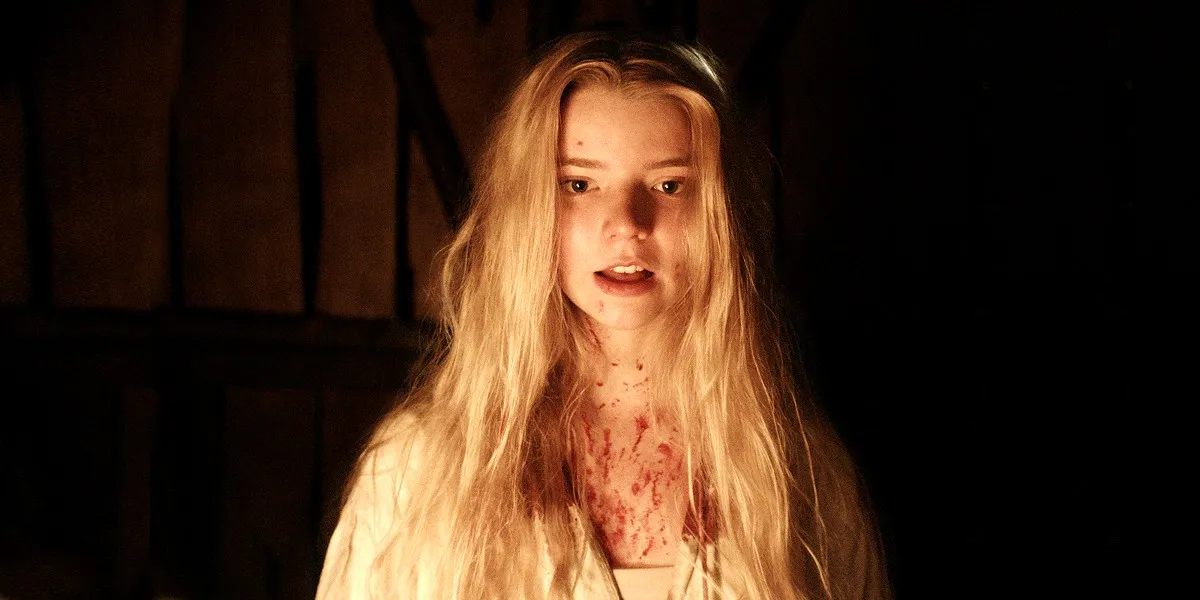These are the absolute best gothic horror movies

Finished reading those gothic horror novels, have you?
I can see you thirsting for more, like a creature of the night thirsts when gazing upon the pulsing veins of a neck. Very well, I shall furnish you with a list of gothic horror films to satisfy your appetites. These films may just be the finest gothic horror titles ever made.
Now, let us begin.
Nosferatu (1922)

We begin our list with this masterpiece of German Expressionism, arguably the most terrifying silent film ever made. Nosferatu was directed by F.W. Murnau and was named as such because, at the time, it was an unauthorized adaptation of Bram Stoker’s Dracula. Perhaps it is better that Dracula was allowed to slumber, for the ancient vampire Count Orlok carries far more horror to the screen in his long fingers.
The Cabinet of Dr. Caligari (1920)

Another gem of the German Expressionists, The Cabinet of Dr. Caligari is as visually stunning as it is psychologically unsettling. It tells the tale of a traveling hypnotist named Dr. Caligari who uses a sleepwalker named Cesare to commit murders, blurring the lines between reality and a waking nightmare.
Rebecca (1940)

Adapted from a book of the same name, the gothic mystery Rebecca directed by Alfred Hitchcock lingers in the mind like a gothic fart in a drawing room. Bolstered by chilling set design and hair-raising performances from actors Joan Fontaine and Laurence Olivier, the film tells the story of a young woman who is haunted by the presence of her husband’s first wife—this would be a normal occurrence if the woman was not dead.
The Innocents (1961)

Based on the Henry James novella The Turn of the Screw, this film’s horror is chillingly psychological. The Innocents follows a governess who gradually begins to lose her mind once she suspects that the children in her care are possessed by dark spirits. She should know better, really, because ALL children are possessed by dark spirits.
Black Sunday (1960)

Italian director Mario Bava’s Black Sunday is amazing. It is the atmospheric tale of a witch’s curse and revenge and has a spine-tingling performance by Barbara Steele. This film is unique because it features two of pop culture’s most famous monsters—a witch and a vampire. When doctors stumble upon a witch’s tomb during a visit to Moldavia, they inadvertently revive the witch and her vampire lover Javutich, who are buried together.
Crimson Peak (2015)

The modern gothic horror Crimson Peak directed by Guillermo del Toro pays homage to the genre’s classic tropes while maintaining a point of view as fresh as a newly killed corpse. It follows the story of Edith Cushing, who falls in love with the mysterious Sir Thomas Sharpe and marries him. They move to Allerdale Hall, a decaying mansion overflowing with dark secrets. As Edith unravels the truth of the mansion, she must fend off dark spirits and malevolent intentions that try to seal her fate.
The Others (2001)

This suspenseful story is set in a secluded mansion on the island of Jersey during World War II. The Others revolves around Grace Stewart, a religious mother of two whose children suffer from a rare sunlight allergy called Xeroderma Pigmentosum. When Grace hires new servants to help maintain the household, strange events begin to occur. Mysterious figures appear and haunt the halls and the children claim to see dead people. Grace becomes increasingly paranoid and tries to protect her two little Haley Joel Osments’ from the spirits of the mansion’s previous occupants.
Pan’s Labyrinth (2006)

Set during the Spanish Civil War, Guillermo del Toro’s Pan’s Labyrinth blends dark fantasy with elements of gothic horror when a young girl named Ofelia discovers a secret Labyrinth in the Spanish countryside. She learns that creatures of all types live there—fairies, fawns, and child-eating monsters—and they all haunt the labyrinth. Then there is the horrifying Captain Vidal, a high-ranking officer in the Francoist regime and new husband to Ofelia’s mother.
The Witch (2015)

The Witch is a period horror film set in 1630s New England. It is an example of what some call “elevated horror” and it explores weighty themes such as isolation and religious hysteria. After a colonial family is kicked out of their village and forced to survive on their own, they begin to experience something strange. After the family’s baby disappears without a trace, the family’s devout matriarch begins to suspect witchcraft; witchcraft she believes to be orchestrated by her own daughter!
The Bride of Frankenstein (1935)

Considered one of the greatest horror sequels of all time (perhaps the only good one ever made) The Bride of Frankenstein expands upon the original tale, elevating it to new heights. Directed by James Whale, the film tells the story of Dr. Frankenstein’s doomed attempt at creating a suitable mate for his monster. As the mad doctor attempts to create life once more, Frankenstein’s monster tries to assimilate into modern society, with predictably disastrous results.
Suspiria (1977)

Suspiria, also known as Reasons Never To Go To Art School. The plot? A young American dancer is sent to train abroad at a creepy ballet school in the middle of Nowheresburg, Germany. The result? She uncovers an evil coven of witches, as you do. The visual language of the film might as well be the words “PCP-induced fever dream” written in blood on a razor wire fence. It’s lurid. It’s ghastly. It’s haunting. And the soundtrack? Arranged by the band Goblin, it’s a hallucinatory cacophony of evil that sounds like it was arranged by the band’s namesake.
Carnival of Souls (1962)

For an equal parts sumptuous and sinister genre like gothic horror to work, you need a budget. You need dazzling set pieces that look like they were built by Transylvania hands centuries ago. You need elegant costumes. Curtains. Drapery. Candelabras. The whole nine. Unless you’re Herk Harvey, director of Carnival of Souls, that is. A low-budget masterpiece, Harvey’s dark and dreamlike tale of a spooky, specter-haunted carnival proved that sometimes you can deliver gothic thrills on the cheap.
Let The Right One In (2008)

Tomas Alfredson’s Let The Right One In might not seem like a gothic horror tale to a purist, but oh, how wrong the purists are. Set in a dreary Northern European town, a bullied young boy befriends a mysterious girl who only seems to come out at night. Spoiler: she’s a vampire. The dark and snow-covered world is the perfect gothic horror backdrop, adding a sense of chilly and quiet foreboding to each scene. At the center of Let The Right One In beats the dark and soulful heart of a romantic.
A Girl Walks Home Alone at Night (2014)

An Iranian Gothic Horror Neo-Western, Ana Lily Amirpour’s A Girl Walks Home Alone At Night is a one-of-a-kind film. The plot centers around a chador-clad vampire who spends her night stalking the black and white streets of Bad City, looking for predatory men to make her prey. Instead, she finds the young and charming Arash, who is drunkenly stumbling home from a costume party dressed as Dracula. Moody, eerie, and witheringly romantic, A Girl Walks Home Alone At Night is a gothic horror must. And the film’s flagship song “White Lies” by Death? An unparalleled goth bop.
Eyes Without a Face (1960)

Eyes Without a Face … the mere title of Georges Franju’s gothic French horror magnum opus sends a shiver down my spine. After a car accident leaves his daughter Christiane’s face disfigured, plastic surgeon Dr. Génessier makes it his mission to restore his child’s former beauty. How? By kidnapping women and grafting their facial tissues onto Christiane in horrible experimental surgeries that end in failure and death. When it comes to Gothic costume pieces, Christiane’s blank face mask would make the Phantom of the Opera hang up his wardrobe in shame.
The Hunger (1983)

An 80’s erotic Gothic horror film starring Catherine Deneuve, David Bowie, and Susan Sarandon as vampires? You may be wondering, “Where has this movie been all my life?” Tony Scott’s The Hunger stars Deneuve as a vampire as ancient as she is glamorous, who has taken a liking to a young cellist played by Bowie. At least, for a time. As the years pass, the cellist realizes with mounting horror that his vampire lover’s promise of eternal life is only partially true, as it comes without the perk of eternal youth. Desperate to stave off the rigors of age, he seeks out a doctor played by Sarandon that could potentially help him turn back the clock. Death and sexuality combine in gothic horror delight.
The Devil’s Backbone (2001)

Like Pan’s Labyrinth, Guillermo del Toro’s The Devil’s Backbone is set against the bloody backdrop of the Spanish Civil War. After the death of his father, a young boy named Carlos is sent to live in an orphanage in a remote part of the country. As it turns out, not all the children of the orphanage are among the living, and the ghost of a child named Santi begins to appear to Carlos, revealing dark secrets about the orphanage and its ties to the war beyond its walls. Ghost children wandering around creepy orphanages in the woods? It doesn’t get more Gothic than that.
The Masque of the Red Death (1964)

I first watched The Masque of the Red Death for free on YouTube, and I was pleasantly charmed. It is, at its core, a work of high camp (even if the director Roger Corman intended it to be taken seriously). Starring scene stealer Vincent Price as the nefarious Prince Prospero, The Masque of the Red Death retells the famous Edgar Allen Poe fable of how death comes for even the richest of us, and there’s nothing we can do to stop it. Come for the vivid colors and luxurious set pieces, and stay for the soap opera melodrama delivered with utmost seriousness.
Rebecca (1940)

Rebecca is Alfred Hitchcock’s retelling of Daphne du Maurier’s gothic novel of the same name. The plot revolves around an unnamed young woman who falls in love with a rich widower and is whisked away to live with him in his fabulous estate in England. It’s lavish. It’s picturesque. It’s … totally isolated. Things get weird once the woman realizes that a former tenant of the mansion, a woman named Rebecca, is still living there as a ghost. But is she real or imagined? As our heroine’s sanity slowly erodes, we’re not so sure either.
Interview with the Vampire (1994)

Interview with the Vampire is inspired by Anne Rice’s vampire bible of the same name. One of the greatest bloodsucker stories ever told, Interview centers around a pair of deliciously melodramatic vampire exes, brought to life by deliriously glam duo Tom Cruise and Brad Pitt. Recounting his relationship with his lover and vampire creator, Louis de Pointe du Lac tells all about how the pair menaced 18th-century America, eventually turning a little girl into a vampire progeny. It’s decadent. It’s droll. It’s depraved. It’s a gothic horror must-see.
Have a tip we should know? [email protected]
